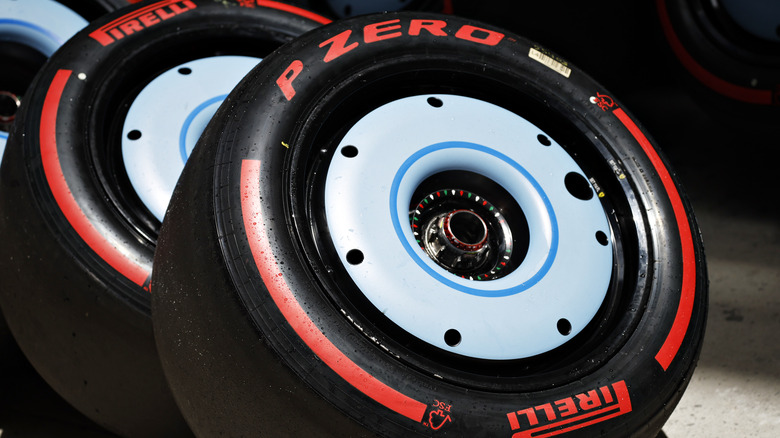
Seemingly everything in Formula 1 is tailor-made for the world's largest racing series. Nations around the globe have built FIA Grade-1 circuits hoping for the opportunity to one day host the traveling circus
. The regulations' space-age turbocharged 1.6-liter V6 is a powerplant unlike any other in motorsports, yet Audi, Cadillac, and Ford are all taking a crack at it in the coming years as joining engine suppliers.Nothing comes as exclusive, however, as Pirelli. The lone tire supplier for Formula
One, the Italian brand has been supplying rubber to F1 since 2011. With a typical race weekend chewing through 1,500 tires, and over 40,000 tires made annually, Pirelli has learned plenty of lessons over the past decade on how to make the perfect racing tire.
One of these innovations has resulted in a fresh, glossier look for tires. A look not just unique to F1, but one that came out of necessity for Pirelli, as the brand had to rethink the way it made tires to meet the league's level of quality and standardization.
Read more: Every 2025 Formula 1 Livery, Ranked From Worst To Best
What We're Cookin'

To understand the shine, we first need to understand how tires are made. Once a tire's inner steel carcass and outer rubber and tread are mated together, they are prepared for the final and most important process of the production: vulcanization. The assembled "green" tires are placed in a metallic mold, and the tire is then inflated and superheated, hardening the rubber significantly, and giving the two wet-weather compounds — the green-colored intermediate and blue-striped full wet — their iconic treads.
Pirelli has six flavors of slick compounds it can bring to each weekend, ranging from the long-lasting C1 all the way to the hypersoft C6. Every green tire goes into the mold exactly the same; it's the temperature and heat of their vulcanization that separates each compound's softness and durability.
After being baked, the tires go through heavy inspection from Pirelli's technicians. From visual analysis, to weighing and measuring each compound to thorough x-ray scans, engineers ensure that the tire is completely sound from the inside out.
So Why The Shine?

It was during these inspections in 2018 that Pirelli noticed an issue. When the softest compounds — then the C4 and C5 rubber — were done baking, they wanted to stick to the mold. This not only made it difficult for tires to be removed, but resulted in an inconsistency from tire to tire. With the softs now prone to blemishes and marks on the tread, Pirelli needed a solution for a series with regulations so standardized.
The solution came in utilizing chrome molds, which immediately showed less adhesive and more consistent results in production. This had an interesting side effect, though, with the now-iconic glossy shine on the outside. Pirelli first tested the compounds in 2018 in Formula 2, before being fully integrated in all Formula 1 compounds the following season.
Despite the finish, the new manufacturing process showed no difference in the tires' performance. However, the gloss made it far easier for fans and teams to differentiate tire wear, with the now-iconic shine being a sign of fresh rubber.
Want more like this? Join the Jalopnik newsletter to get the latest auto news sent straight to your inbox...
Read the original article on Jalopnik.












